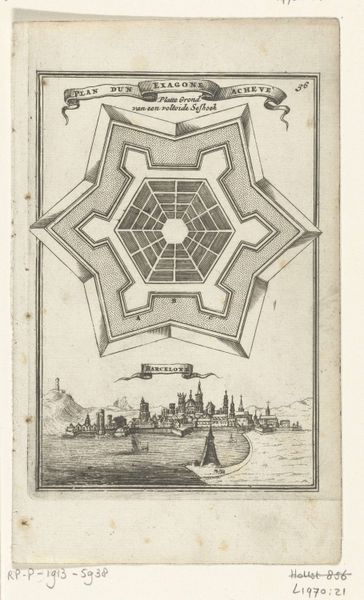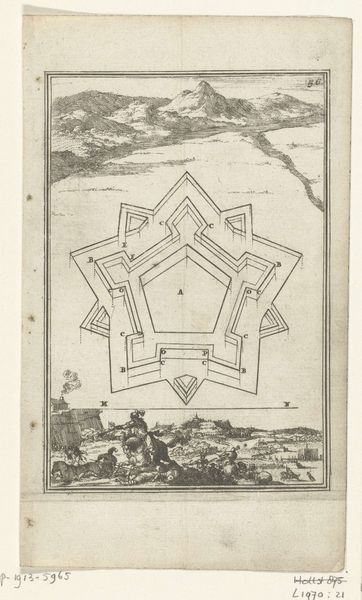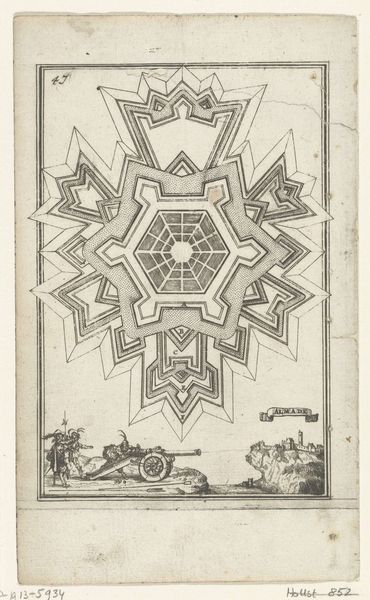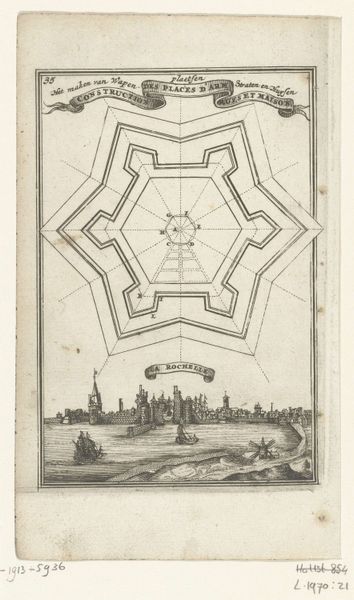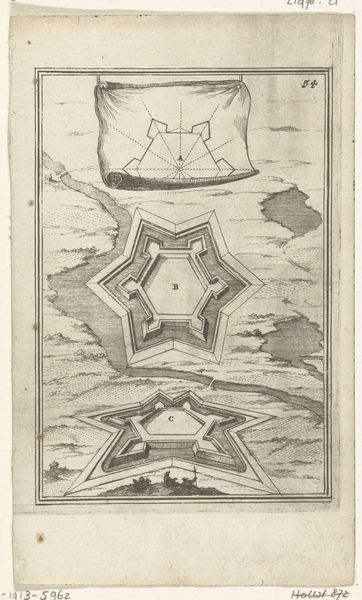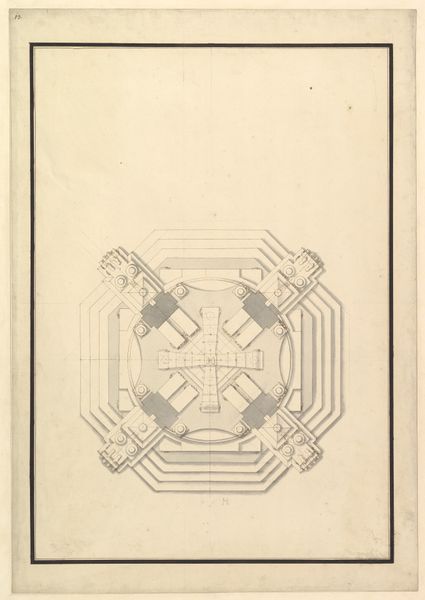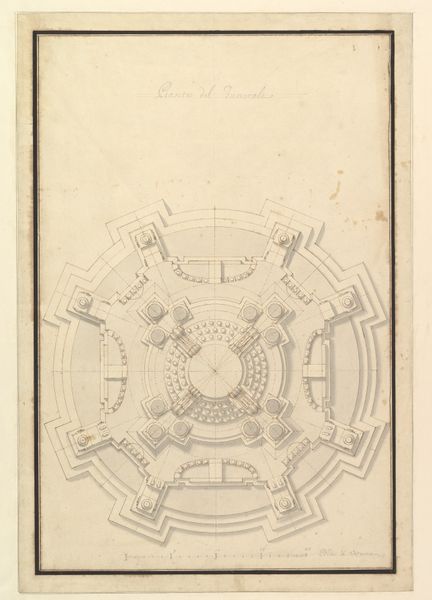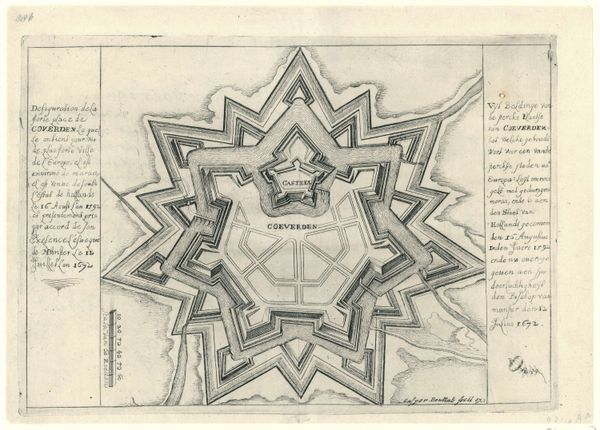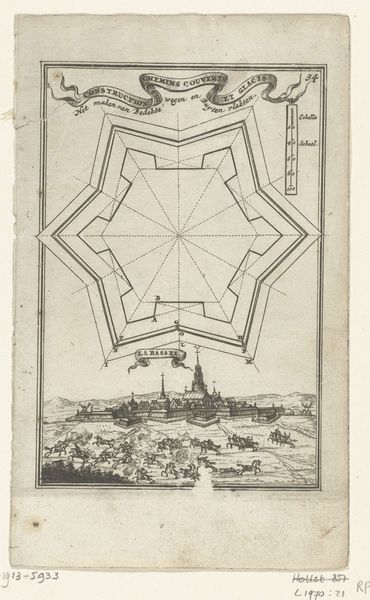
Illustratie voor 'Den Arbeid van Mars' van Allain Manesson Mallet 1672
0:00
0:00
drawing, print, engraving
#
drawing
#
baroque
# print
#
landscape
#
geometric
#
line
#
engraving
Dimensions: height 186 mm, width 111 mm
Copyright: Rijks Museum: Open Domain
Editor: Here we have Romeyn de Hooghe's "Illustration for 'Den Arbeid van Mars' by Allain Manesson Mallet," created in 1672. It’s an engraving, and the detailed linework is quite striking, although the geometric forms make it seem less organic than one might expect from a landscape piece. How do you interpret the arrangement of shapes within this print? Curator: The composition is meticulously structured. Notice how the linear precision defines each element – from the bastion’s complex layout to the strategic arrangement of the internal spaces. Observe how the darker sections define depth through tonal variety. Do you discern a tension between the abstract form and representational intent? Editor: I do now. The shapes are almost diagrams, yet they sit above this more "painterly" landscape. What effect does that have? Curator: Precisely. De Hooghe utilizes line as a defining tool. The fortress, reduced to its essential geometric structure, exists in stark contrast to the softer depiction of the boats and figures. It underscores the intellectual ordering of space. It is almost like imposing knowledge. How does that positioning influence your understanding? Editor: I see what you mean! There is this juxtaposition between calculated geometry and a kind of 'romantic' scene beneath. It is really odd. Curator: And isn't that oddness quite compelling? Editor: Yes, it definitely highlights the complexities inherent in even seemingly straightforward depictions. Thank you. Curator: Indeed, our awareness of form opens the way to appreciating deeper layers of intention.
Comments
No comments
Be the first to comment and join the conversation on the ultimate creative platform.


